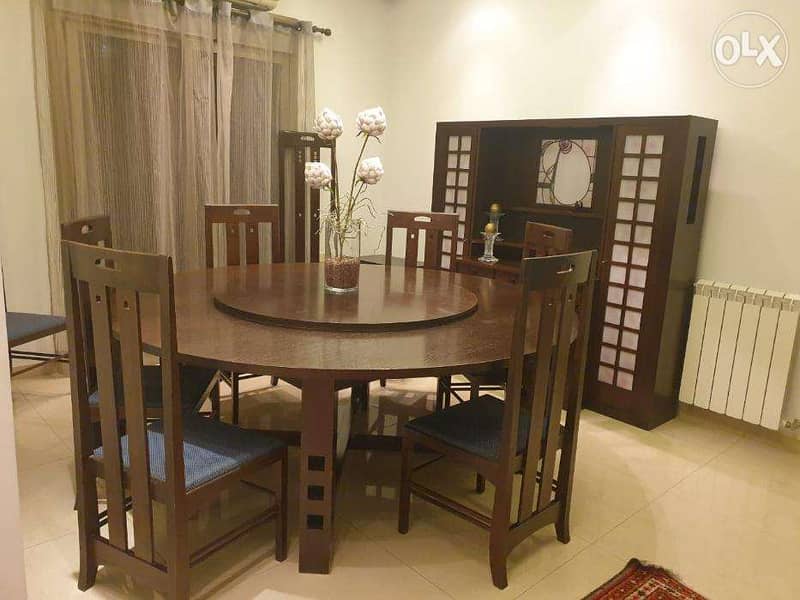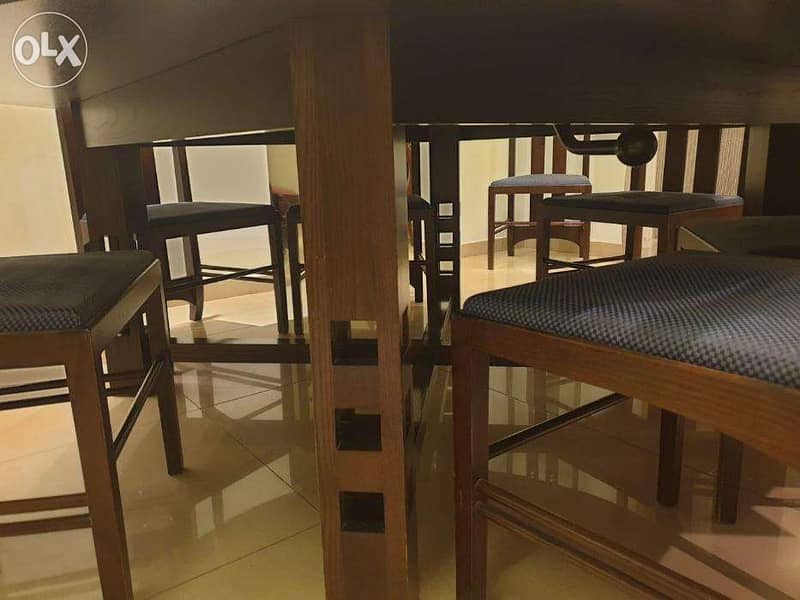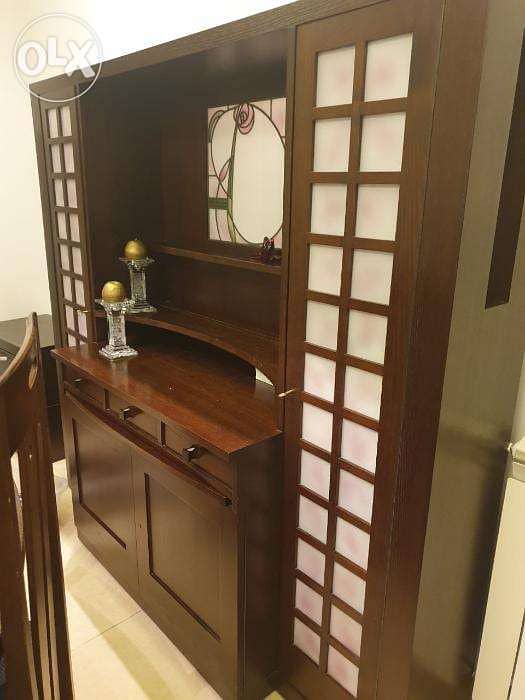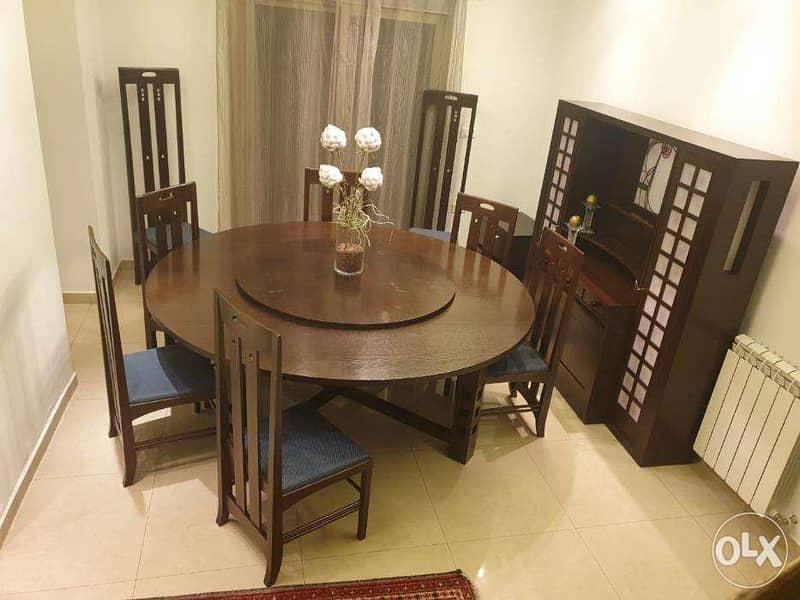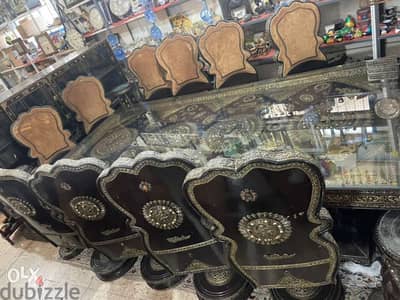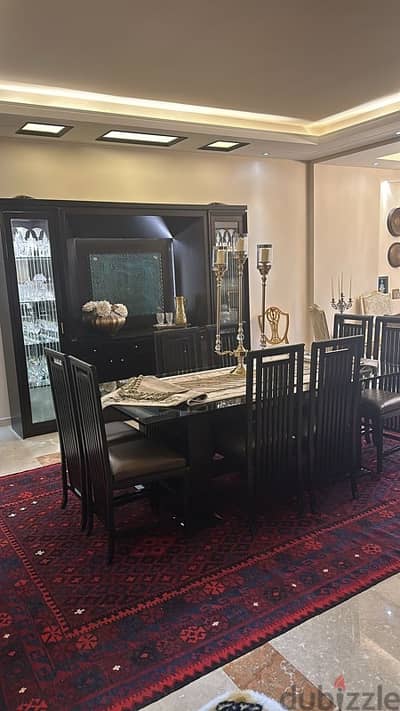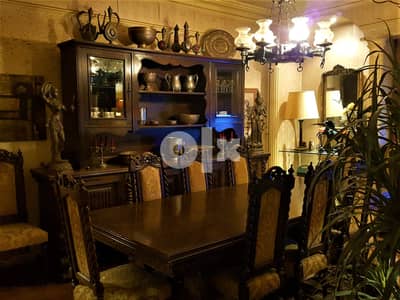1 / 5
Details
TypeFull Dining Room
ConditionUsed
Description
The Table:
Designed by Charles Rennie Mackintosh in 1904, the 304 dining table is a rare collector's piece made by Italian furniture powerhouse Cassina but now out of production. Charles Rennie Mackintosh was a Scottish architect, designer, and watercolorist who played an important role in the turn-of-the-century Post-Impressionist and Arts & Crafts movements, and is considered the father of "The Glasgow School" of the international Art Nouveau style and a key pioneer of modern design. Minimalist yet refined, the 304 is a round ash wood table stained black with square legs with three symmetrical cutouts per leg. In an ingenious bit of thoughtfulness, Mackintosh designed the 304 table to have a lever-operated built in "lazy susan" with a detailed side edging, so the table top resembles a pair of concentric circles. In very good vintage condition.
Dimensions
Height: 29.5 in. (74.93 cm)Width: 76 in. (193.04 cm)Depth: 76 in. (193.04 cm)
The Chairs: 6 Short and 2 Highback Ingram
This very exclusive 6 chairs were first drafted by famous turn-of-the-century designer architect Charles Rennie Mackintosh for the White Room and the Cloister Room at the Ingram Street tea rooms Glasgow. This set of chairs was produced by Cassina (marked) in 1981 and retains the original blue fabric seat.
• Length : 47 cm
• Height : 106 cm
• Depth : 45 cm
(2*Highback)Charles Rennie Mackintosh designed the Highback Ingram Chair around 1910 for the White Dining Room of the Ingram Tea Rooms in Glasgow, Scotland. The same model in a painted version with glass insets was used in the Mains Street Flat (1901). In 1900, Kate Cranston gave Mackintosh the opportunity to redesign an entire room at the Ingram Street tearoom. He had just recently married the artist Margaret Macdonald, and together they created the White Dining Room, including a hallway opening onto the street and divided off by a wooden screen with leaded glass panels, giving those entering a glimpse into the room itself. The Tea Room became so popular, it was a tourist destination for those visiting Glasgow. Eleven years later, Mackintosh was to perform more work on the Tea Room creating the Cloister Room and Chinese Room.
The Charles Rennie Mackintosh Highback Ingram is constructed of ashwood with a black stained finish. Seat cushion is leather or fabric.
Made In Italy.
Dimensions: H 59" D 17 3/4" W 18 1/2" SH 17"
Materials: Highback Ingram chair with an upholstered seat and ashwood frame with a black stain
Sideboard:
This Charles Rennie Mackintosh Sideboard is part of a series of models designed by Mackintosh supposedly for the country home of W. J. Basset-Lowke. They were not produced during the lifetime of Mackintosh, and are known only from a pencil and watercolor drawing now in the Glasgow University Collection.
The design of the stained glass panel in the sideboard is not indicated in the Mackintosh drawing. The present reproduction utilizes Mackintosh's design of the "weeping rose" as was first used by him in 1900 on the writing desk of the musician, Michael Diak. The weeping rose motif was a favorite of Mackintosh and he used it for other stained glass panels and other cabinets. Charles Rennie Mackintosh is known as one of the most creative and skilled architects and interior designers of the 20th century. Many of his furniture, glass, and architectural designs have grown in popularity now over 100 years later. His signature Art Nouveau style can be easily recognized.
The Charles Rennie Mackintosh Sideboard is constructed of ashwood with a black stained finish
Dimensions: H 60" D 22 1/2" W 65"
Please Contact only WhatsApp 70222425
Location
Lebanon
Ad id 112453744
Report this ad
Related ads
Listed by private user
ma
Member since Jun 2016
See profile
Your safety matters to us!
- Only meet in public / crowded places.
- Never go alone to meet a buyer / seller, always take someone with you.
- Check and inspect the product properly before purchasing it.
- Never pay anything in advance or transfer money before inspecting the product.
